Expecting sinister reflections on political infiltration, drug cartels, or violent corruption in Mexican society, instead I encountered in the current exhibition Strange Currencies at the Galleries at Moore something substantially more subtle. With detailed insights into avant-garde practices in Mexico City in the 1990s, the show both assembles key figures of this turbulent decade and examines their playful rather than depressive, sarcastic rather than deadpan, and subversive rather than didactic dissolution of dusty conventions.

The 28 Mexican artists in Strange Currencies mainly developed time-specific, action-based, and socially engaged practices. In documentary photographs, videos, sculptural and auditory installations, and intermedia assemblages, their works visualize a DIY mentality in which young Mexican artists not only rejected academic methods of visualization but also blurred the boundaries of conformities into ephemeral interventions out of their studios and into the urban streets of Mexico City, as curator Kaytie Johnson (Rochelle F. Levy Director & Chief Curator at the Galleries at Moore) emphasizes. Their historical and political implications are multifaceted and deeply ironic. Not to worry, though—even without knowledge of the specific social-political context of Mexico in the 1990s, one can experience the performative impulses in the exhibition. The show orchestrates a powerful cacophony of sensual stimuli that broadens our appreciation of radical art practices.
The endangered body
Documenting in series of photographs five existential and ritual-like performances, Lorena Wolffer physically enables us to empathize with Mexican artists and women in particular. In “Territorio Mexicano (Mexican Territory)” (1997), she exposed herself for six hours to the torture of lying pinioned on a surgical table while blood constantly dripped onto her abdomen, drawing a map of lines and splashes, with a recorded voice endlessly repeating “Danger, you are approaching Mexican territory.” Questions about bloody colonialization in Mexico’s history instantly arise; but also sinful misconceptions of the female body, ruthlessly uncovered to social voyeurism. Wolffer’s work lies at the intersection between art and activism, surely referring to other art activists such as the Austrian performer Hermann Nitsch. Because of the extent to which Mexican artists were aware of European movements through the 1980s, her references might not be surprising, but her existential topics go well beyond that. Ranging between cultural identity and traditional role models, she captures in her performances the imbalances of power, oppression, gender, and class in the 1990s.
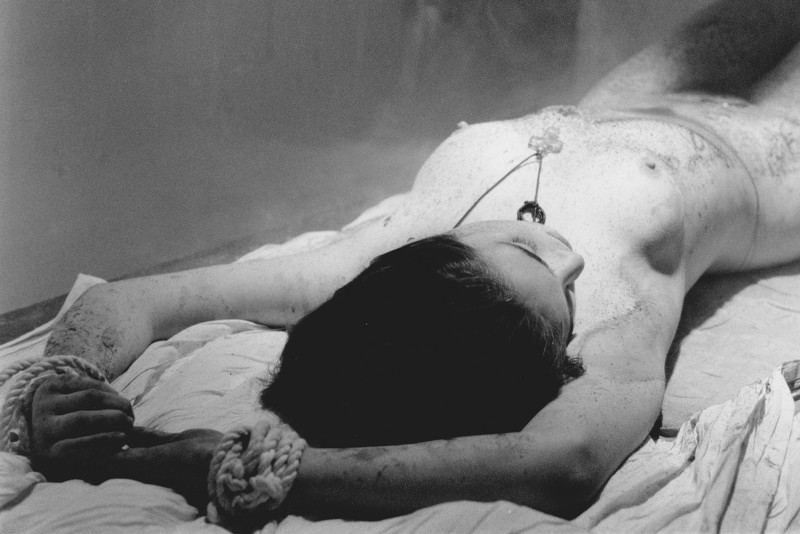
A taste of history
Incorporating sexual prejudices and Mexican history in the simple act of tasting, Silvia Gruner’s video “In Situ” (1995) presents the artist‘s tactile exploration of a pre-Hispanic-styled clay object, similar to indigenous figurines associated with female fertility. Gruner literally incarcerates the object with her mouth; she clips the figure between her teethes and fondles it with her lips and tongue while vulgarly displaying the small figurine to the camera. The video hybridizes indigenous worship of sexual objects with modern feminism and the rejection of gender roles.
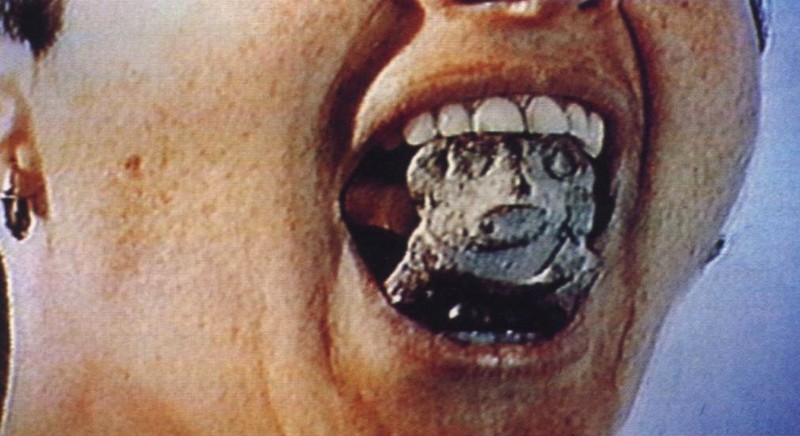
The sound of revolution
The endless spirit of a rebellious day… (seems)… both too close to ignore and too far away to remember…” (in Spanish: “…el espiritu eterno de la rebeldía… Demasiado cerca para ignorarlos, y demasiado lejos para recordarlos…”) – The phrase resonates for a short moment out of the listening station “Pirate Radio Programs and Capsules” (1994-99) by Taniel Morales. The artist’s auditory installation crossfades a mix of sound sequences from television shows, movies clips, and radio features, and interrupts them with talks and subversive messages. In the multifunctional and ambulant cabin (constructed by the Philadelphia artist collective Traction Company), which is equipped with chairs, table, lamp, mixer, microphones, and computer, Morales broadcasts his exploration of the medium of pirate radio.
In reminiscence of Bertolt Brecht’s theory of radio as a useful “Apparatus of Communication,” Morales engages the listener to hear and speak and creates an electric intersubjectivity between the radio’s voices and its listeners. It seems like the radio station subversively transmits Morales’ ideas of the spirit of rebellion and political disagreement—traversed by American rock’n’roll mixed with Mexican folk music. Beyond simply using the radio station as an auditory organ that invisibly invades the urban space of Mexico City, the station also invites the audience to occupy the radio on Friday evenings and to establish an interactive platform for the community’s thoughts and expressions.
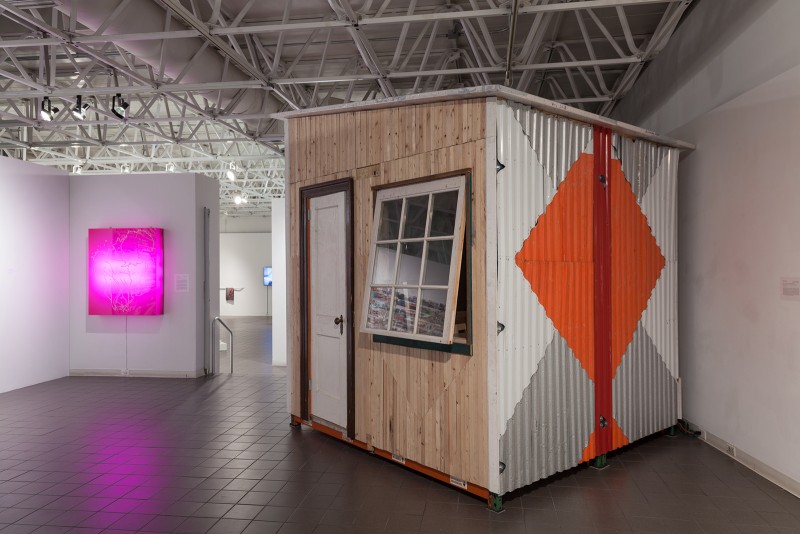
Powerful smells in Mexico
In contrast to Taniel Morales’ creeping invasion, Teresa Margolles’ installation “Trajetas para picar cocaine (Cards for Cutting Cocaine)” (1997-99) directly confronts the visitor with the horrible smell of death. Margolles laminated photos of corpses killed by the drug trades and passed them out at parties in Mexico City. Casually and without regret the drug addicts would cut lines of cocaine with the cards and savor the last pieces from them with their tongues while Margolles photographed the scene. Through the work, Margolles’ critique of a larger system of drug distribution in Mexico and its effects in everyday violence is emphatically visualized. During the 1990s and after the election of the neoliberal leader Carlos Salinas de Gortari, Mexico suffered from a blustery decade of economic changes, political corruption, and obscure assassinations. Teresa Margolles seems to give the anonymous addiction a face visible in the dead bodies and makes social disregard impossible.
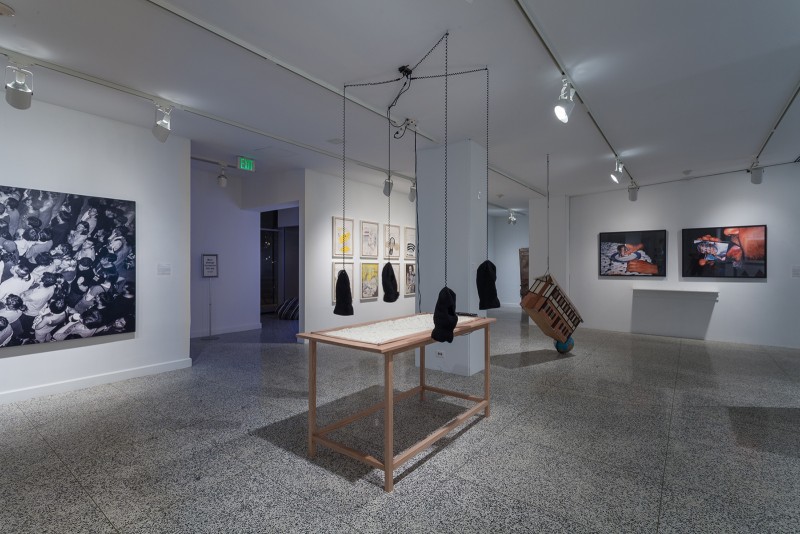
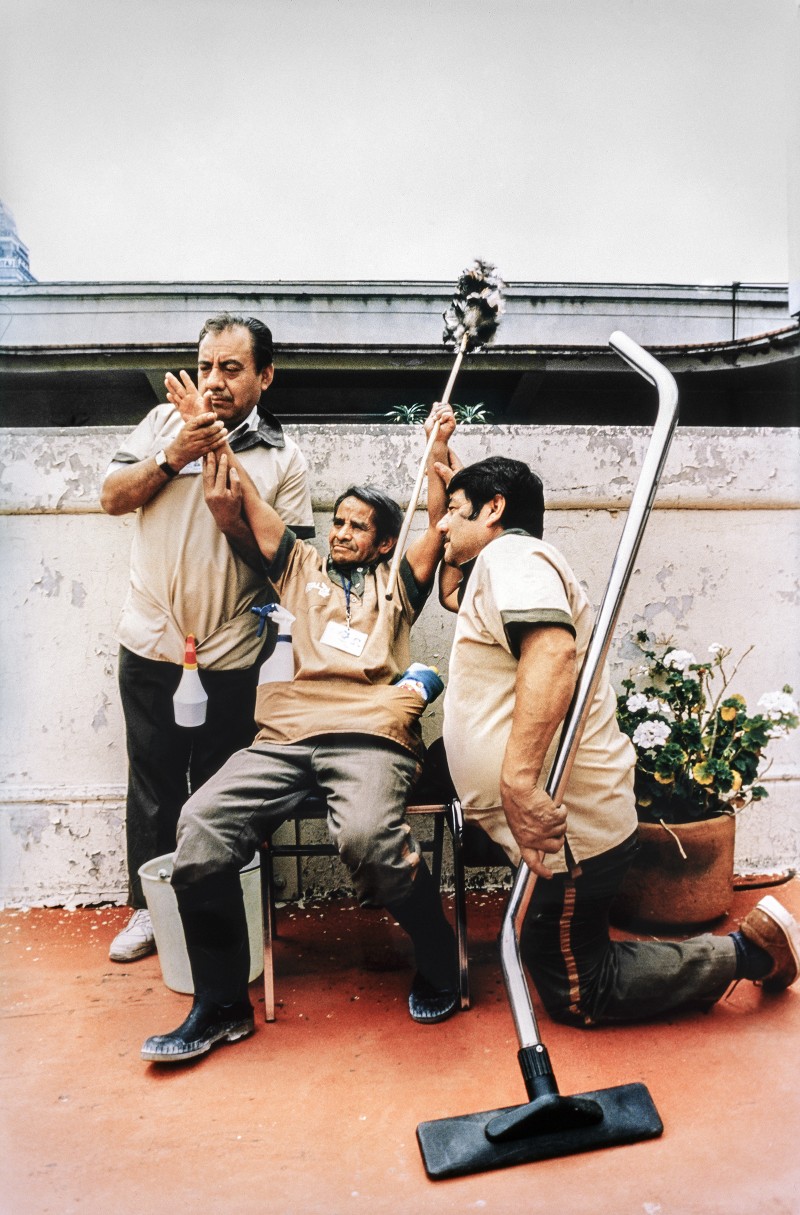
The exhibition also presents a variety of alternative visual strategies reflecting on social changes in Mexico City. For example, Sofía Táboas’ sculptural installation “Anillo-vitamina-champú” (1994) presents female accessories both as an engagement with minimal art and 1990s rave culture and at the same time as a critique of the obsession with beauty. Ironically staging differences of social class and levels of education, museum workers and guards in Miguel Calderón’s reenactment “Empleado del mes no. 1 (Employee of the Month, nr. 1)” (1998) represent historical paintings of the National Museum. In comparison, the video “Pol IV (Police IV)” (1999) by Yoshua Okón seems almost frivolous. In exchange for money, a police officer elaborately twirls his baton and poses in front of the camera. Capturing moments between childish games and cynical implications, Calderón’s and Okón’s works exemplarily present the performative and ephemeral aspects of Mexican art, visible on the streets of Mexico City in the 1990s.
As well as reflecting these social conditions, Strange Currencies raises questions about the relationship between politics and artistic practices for current art scenes in major cities today. Over 20 years ago, Mexico City was obviously characterized by sociopolitical fever, worn down by tensions between power and resistance, gender and class, bribery and assassinations. Young Mexican artists didn’t respond by trying to morally indoctrinate their audiences, however. Instead, using human senses as tools of their artistic approach, the artists in this exhibition developed performative practices that enabled alternative views—consciously visible, audible, tangible, sensible, and olfactory.
Other Mexican artists featured in Strange Currencies: Art & Action in Mexico City, 1990-2000 include: Eduardo Abaroa, Francis Alÿs, Marco Arce, Gustavo Artigas, Iñaki Bonillas, Abraham Cruzvillegas, Minerva Cuevas, Claudia Fernández, Thomas Glassford, Daniel Guzmán, Jonathan Hernández, Gabriel Kuri, Fernando Ortega, Luis Felipe Ortega, Vicente Razo, Daniela Rossell, SEMEFO, Santiago Sierra, Melanie Smith, Laureana Toledo, and Pablo Vargas Lugo.
Strange Currencies can be seen until December 12, 2015 from Monday-Thursday 11-5pm, Fri 11-8pm, and Sat 11-5pm at the Galleries at Moore College of Art & Design.
Further reading
Irmgard Emmelhainz. “Some Thoughts on Art in Mexico from the 1990s and 2000s,” Scapegoat Journal, 10, April 2015.
Ruben Gallo. New Tendencies in Mexican Art: The 1990s, New York, Palgrave Macmillan, 2004, pp. 1-17.
Bertolt Brecht, “Radiotheorie,” in: Gesammelte Werke, Schriften 2, 1967, pp. 119-134. [Excerpt in English translation]









